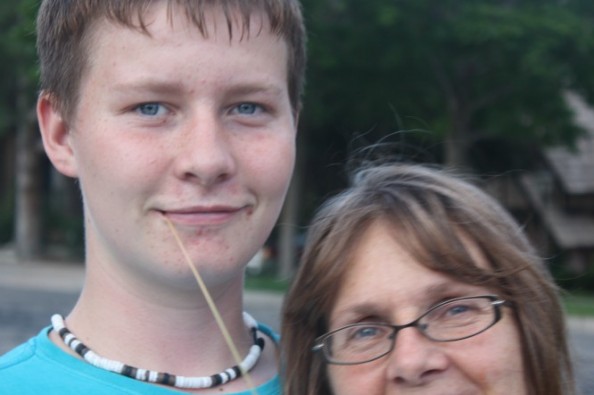I don't want terrible, gut-wrenching, things to happen to my characters. I've spent many hours crafting them and I know them inside and out. They're my friends, my creations. My babies.
Nice Writer Syndrome
Janice Hardy has an apt name for this reluctance to bring one's characters low: Nice Writer Syndrome. In her article, Do You Suffer From NWS?, she writes:
"Stories are fun when readers get to watch the struggle. They want to see someone overcome a terrible problem and win. To do that, you have to put your characters in terrible situations. You have to be mean, be evil, be cruel. If it breaks your heart to do it to them, then you're on the right track."If you think you suffer from NWS head over to Janice Hardy's blog (the link is above) and take her quirky quiz.
A Recipe for Creating Characters Readers Care About
1. Be merciless.
I've just mentioned Janice Hardy's advice, but I want to say one more thing. As Robert Wiersema says, don't flinch. Fiction writing is finding the truth within the lie. And truth hurts, so writers must be courageous and not flinch in the telling of it.
2. Make your character interesting.
This comes from David Farland's article, A Recipe for Great Characters.
How can we make our characters more interesting? David has a few suggestions:
a. Use mystery/concealment
Everyone loves a mystery. We want to figure people out, why they do what they do, 'how they tick'. Give your character
- a secret from his/her past
- a hidden agenda, or even
- "a secret about himself/herself that even the character doesn’t know"
The last suggestion is my favorite! I love writing stories that employ this as well as reading them (changelings, etc.).
b. Make your character conflicted.
Incorporate opposing traits in your character. For instance, Indiana Jones was brave, extraordinarily so, but he was also deathly scared of snakes.
David Farland's advice is right on target, so much so I feel like highlighting it with red and making it blink. He writes:
"Give your character a major internal conflict. By that I mean, pick a word that describes your character. For example: He’s compassionate. Then find another word that can also describe your character, but make it a polar opposite—terrorist. Now, look for ways to reveal both sides of your character. For example, your protagonist might be at a French Restaurant. He sees a mother and a baby, and tries desperately to drag them away from the restaurant—just before it blows up. He saves them! But how did he know that the restaurant would explode? Because he set the bomb. Giving a character a dual nature creates an instability, a lack of balance, that probably can’t stay forever."Let's try this out.
I'm starting on a new story today (Yes! I'm very excited) and I haven't completely nailed down the main character, but I do know she loves her (somewhat obnoxious) best friend--the one who, more often than not, gets her to do something she's not comfortable with and then toddles off leaving my main character to deal with the consequences.
Here's a word that describes my character: Caring.
The opposite of caring: Neglectful.
(Tip: Thesaurus.com can help you find antonyms.)
The problem: How could a caring person be neglectful?
My protagonist could have an important, time-consuming, job. She could be a doctor, nurse, judge, lawyer, etc. In general, I could give her a career which forces her to choose between being a person who cares for her friends and family and a person who, despite what she wants to do, must neglect those she cares for the most.
Yes! I like that.
c. Give your character a special ability or skill.
I've heard a number of successful writers give this same advice. Give your protagonist (and perhaps each of your characters) a special skill, something that only he/she can do.
This doesn't always have to be a useful skill--it could be something trivial like being able to tie cherry stems in a bow with one's tongue or making one's eyes roll backward in one's head. The point is they can do something, and do it well, that no other character can.
That's it for today. This is my second post about the nuts and bolts of characterization, the first is here: How To Create Extreme Characters.
Photo credit: "Say hello to Spike (aka "Butch" and "Killer") from the Tom & Jerry cartoon series" by JD Hancock under Creative Commons License 2.0.






